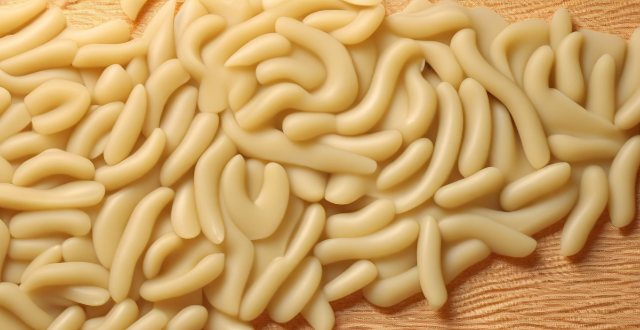To cook al dente pasta, start by selecting a high-quality pasta and filling a large pot with water. Add salt and bring the water to a boil. Once boiling, add the pasta and stir immediately. Check for doneness frequently and drain as soon as it reaches the desired consistency. Serve immediately or reserve for later use. Tips include undercooking slightly, saving some pasta water, avoiding overcrowding the pot, and using a timer to remind yourself to check for doneness.

How to Cook Perfect Al Dente Pasta at Home
Cooking al dente pasta is an art form that requires attention to detail and timing. Here's a step-by-step guide to achieving the perfect texture every time.
Ingredients and Tools
- Pasta of your choice (e.g., spaghetti, linguine, penne)
- Salt
- Large pot
- Colander
- Timer or clock
Steps to Cooking Al Dente Pasta
1. Choose the Right Pasta
Select a high-quality pasta that suits your recipe. Different shapes and sizes of pasta will cook slightly differently, so be mindful of the type you choose.
2. Fill a Large Pot with Water
Use a large pot and fill it with water to ensure the pasta has enough room to move around and cook evenly. A general rule is to use about 4 quarts of water per pound of pasta.
3. Salt the Water
Add salt to the water. A good ratio is about 1 tablespoon of salt for every 4 quarts of water. This helps season the pasta as it cooks.
4. Bring the Water to a Boil
Place the pot over high heat and bring the water to a rolling boil. This ensures that the pasta will start cooking as soon as it hits the water.
5. Add the Pasta
Add the pasta to the boiling water all at once, stirring immediately to prevent sticking. Continue to stir occasionally throughout the cooking process.
6. Check for Doneness
The key to al dente pasta is checking for doneness frequently. Start tasting the pasta a couple of minutes before the recommended cooking time on the package. You're looking for a bite that is firm but not crunchy, with a slight resistance when you bite into it.
7. Drain the Pasta
As soon as the pasta reaches the desired al dente consistency, immediately drain it in a colander. Do not rinse the pasta unless specified in your recipe, as rinsing can wash away valuable starches that help sauces stick.
8. Serve Immediately or Reserve
If you're serving immediately, add your sauce and toss to combine. If you're reserving the pasta for later, drizzle a bit of olive oil to prevent sticking and keep it warm under a towel or in a slightly warm oven.
Tips and Tricks
- Undercook Slightly: It's better to err on the side of undercooking because pasta will continue to soften as it sits or when combined with hot sauce.
- Save Some Pasta Water: Before draining, reserve some of the starchy cooking water to adjust your sauce if needed.
- Avoid Overcrowding: Overcrowding the pot can cause the temperature of the water to drop, leading to unevenly cooked pasta.
- Use a Timer: Set a timer for a few minutes before the expected cooking time to remind yourself to start checking for doneness.
By following these steps and tips, you'll be able to achieve perfectly cooked al dente pasta at home, elevating your meals with just the right amount of tenderness and chewiness.